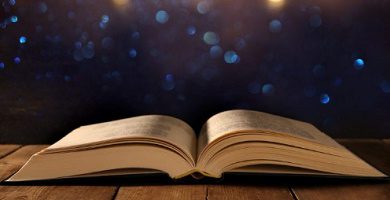What is anaphora?
We explain what anaphora is, what it is for and examples of this rhetorical figure. In addition, what is the catastrophe and what is it used for.
-
What is anaphora?
An rhetoric is called an rhetorical figure or literary figure, which is used to give the written text greater beauty or greater expressive power , and which consists in the repetition of one word or several, at the beginning of a sentence or verse , in the case of poetry , or of a word or a syntactic group, in that of prose.
This literary figure should not be confused with the grammatical or linguistic term that bears the same name ( anaphora ), and that consists in referring a term by means of a pronoun or a deictic before the noun appears in the following sentence.
Anaphora is often used in poetic texts , especially in rhymes, or in speech pieces, since repetition gives them a more powerful, more spectacular effect, as read. This power has to do with musicality and the rhythm of language .
This resource is classified within the rhetorical repetition figures , that is, those that bet on the reuse of some element of the written text. Other examples of this are polysyndeton, parallelism, pun, chiasmus, paronomasia or diaphora, to name just a few of the same category.
-
Examples of anaphora

Some diverse examples of anaphora are the following:
- Run , run , I reach you!
- Together we will achieve the goal. Together we will succeed. Together , never apart.
- Green grape leaf on his forehead / green the aurora borealis announcement
- ” Here was Troy, here my misery”
- Go up that road, go up and back up, until you conquer the top.
- I walked so many paths to be among you … So many and so long, you wouldn’t believe me.
- This was a man so , so envious, that …
- Green , I love you green .
- We had achieved it. We had finally defeated him.
- Then I saw her: the one with the green eyes, the tight pants, the matchless face.
-
What is the catastrophe?

The catastrophe is a linguistic figure that consists of the advance reference of an idea or a subject that will be made explicit later in the sentence , in other words, to the resource that consists in using deictics or pronouns to refer to something that will later be left in Sure. For example, in the sentence:
“From the first time the saw, I knew Laura would be my wife.”
The second pronoun la, highlighted, anticipates the arrival of Laura, the subject of which it is spoken, therefore the full meaning of “the” can only be completed at the end of the sentence, and not input when reading said pronoun. This is known as a catastrophe.
Other possible examples of catastrophe:
- As soon as we saw him arrive, we confirmed that Miguel was in love.
- In one pocket he had it, a Smith & Wesson revolver that had belonged to his father.
- One raised her hand: she was the teacher’s wife.





